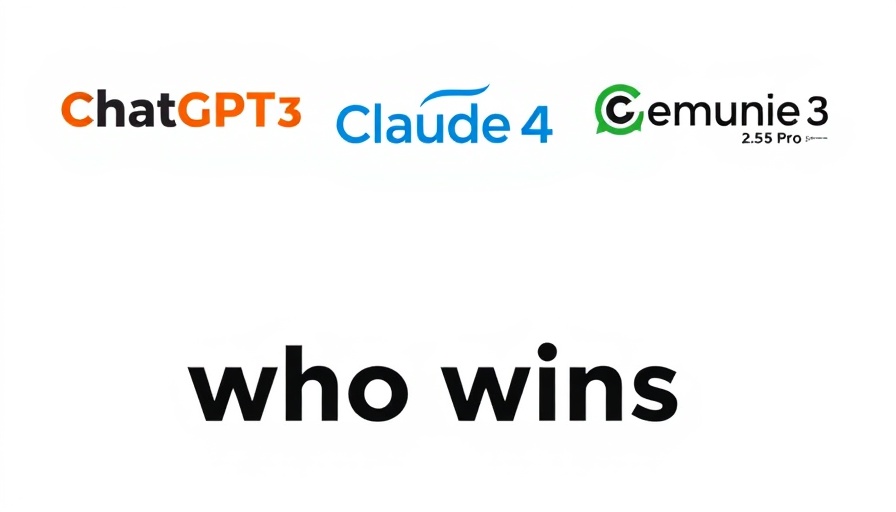
Understanding the AI Competition Landscape
The recent showdown between ChatGPT 3, Claude 4, and Gemini 2.5 Pro in a high-stakes coding battle has captured the attention of AI enthusiasts and professionals alike. As AI tools become increasingly integral to various sectors, understanding the performance and pricing strategies of these top contenders can reshape how users choose their AI systems. Notably, ChatGPT 3's recent 80% price cut could signify a shift in the market dynamics, raising questions about the long-term value of competing platforms.
In 'ChatGPT o3 VS Claude 4 VS VS Gemini 2.5 Pro: Who Wins?', the discussion dives into AI performance evaluations, exploring key insights that sparked deeper analysis on our end.
Performance in Side-by-Side Testing
Each AI was tasked with creating a game based on detailed prompts, allowing for a fair comparison across several coding challenges. The results were telling. ChatGPT 3 emerged with consistent performances, managing to handle tasks seamlessly compared to its rivals. In contrast, while Claude 4 initially appeared competitive, it faltered, experiencing errors that inhibited its ability to deliver results effectively. Gemini 2.5 Pro also encountered setbacks but had moments of creativity that’s noteworthy.
The Price of AI: Value vs. Cost
OpenAI’s strategic price cut is significant. As ChatGPT 3 becomes 80% cheaper to use than its predecessors, its affordability may attract users who seek budget-friendly options without sacrificing quality. Claude 4 and Gemini 2.5 Pro’s pricing strategies could force a reevaluation of what users prioritize in an AI tool—performance, cost, or both. Users need to consider not just immediate costs but also the tangible outputs these models generate, as demonstrated in the coding battle.
User Experience: The Importance of Interface and Interaction
In the world of AI, the user interface (UI) is critical. The experiences derived from operating these AI systems can heavily influence long-term loyalty and usage. While ChatGPT 3 provided a straightforward interface, ease of use can drastically improve operational efficiency in professional settings. Claude 4, despite its errors, exhibited a more aesthetically pleasing design, whereas Gemini 2.5 Pro struggled with usability when faced with heavier tasks. Users may find themselves gravitating towards platforms that enhance their workflow through better UI.
Future Predictions: What Lies Ahead for AI Tools?
The competitive landscape of AI tools is poised for evolution. As developers make strides in refining algorithms and user experiences, future versions of these tools could bridge performance gaps and enhance efficiency. Observing price adjustments and user feedback in real-time is essential; as organizations adopt AI tools, we may witness shifts that prioritize value propositions beyond mere pricing.
Conclusion: Choosing Wisely in the AI Landscape
As the insights extracted from this coding duel reveal, selecting an AI tool requires an informed approach. Factors such as testing performance, cost-efficiency, and user experience should guide choices for individuals and businesses alike. Keeping abreast of developments like ChatGPT 3’s aggressive pricing strategy may uncover opportunities to maximize resources and overall productivity. Ultimately, explore whether your current AI systems yield the intended results and consider how changes in the landscape might influence your next steps.
 Add Row
Add Row  Add
Add 




Write A Comment